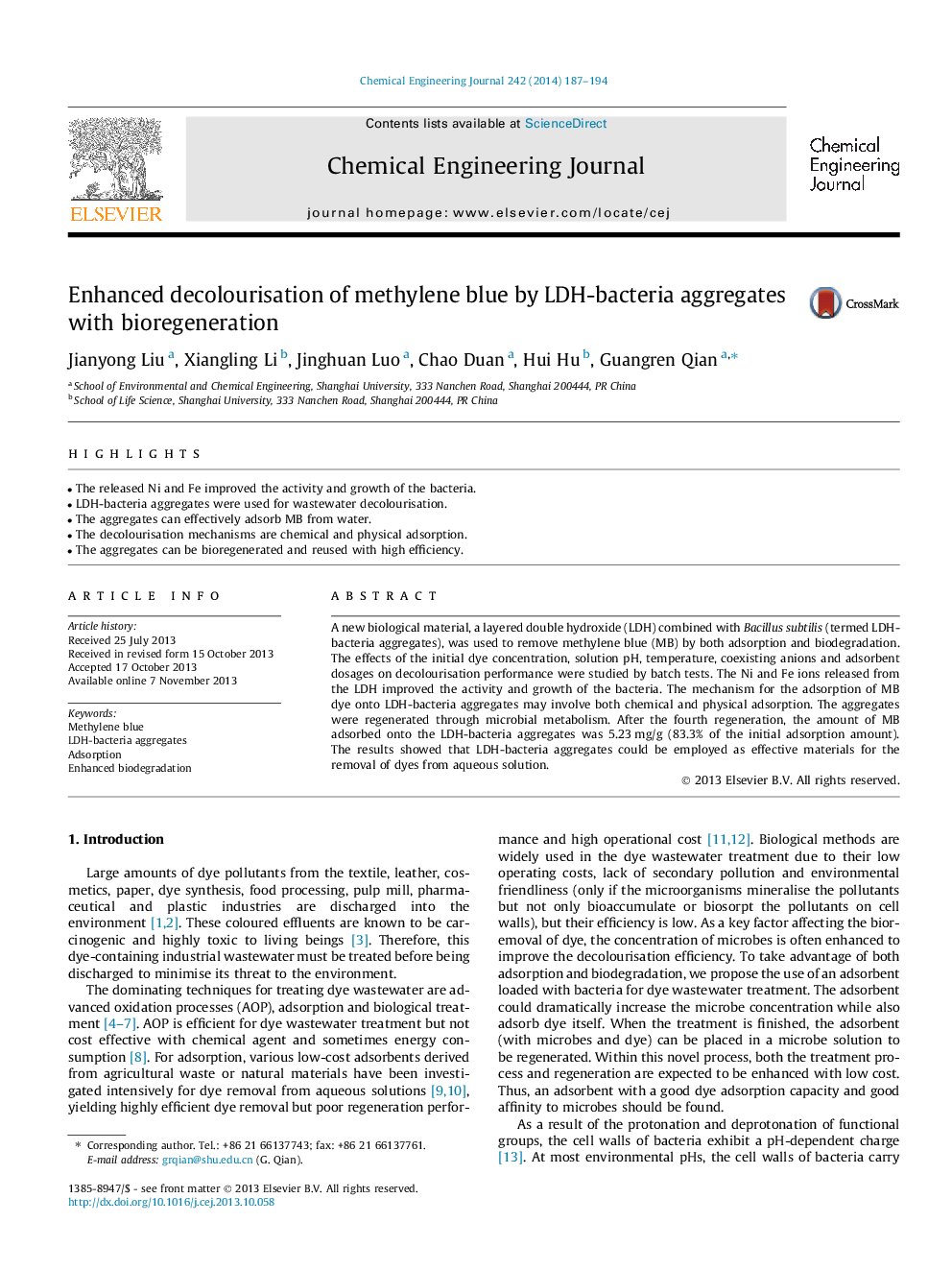| Article ID | Journal | Published Year | Pages | File Type |
|---|---|---|---|---|
| 147637 | Chemical Engineering Journal | 2014 | 8 Pages |
•The released Ni and Fe improved the activity and growth of the bacteria.•LDH-bacteria aggregates were used for wastewater decolourisation.•The aggregates can effectively adsorb MB from water.•The decolourisation mechanisms are chemical and physical adsorption.•The aggregates can be bioregenerated and reused with high efficiency.
A new biological material, a layered double hydroxide (LDH) combined with Bacillus subtilis (termed LDH-bacteria aggregates), was used to remove methylene blue (MB) by both adsorption and biodegradation. The effects of the initial dye concentration, solution pH, temperature, coexisting anions and adsorbent dosages on decolourisation performance were studied by batch tests. The Ni and Fe ions released from the LDH improved the activity and growth of the bacteria. The mechanism for the adsorption of MB dye onto LDH-bacteria aggregates may involve both chemical and physical adsorption. The aggregates were regenerated through microbial metabolism. After the fourth regeneration, the amount of MB adsorbed onto the LDH-bacteria aggregates was 5.23 mg/g (83.3% of the initial adsorption amount). The results showed that LDH-bacteria aggregates could be employed as effective materials for the removal of dyes from aqueous solution.
